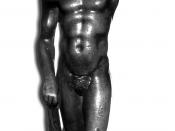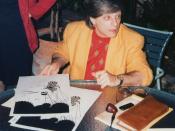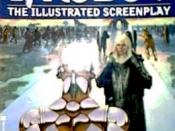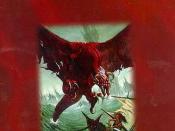Incognita, Inc. Harlan Ellison &The Art of the Maze Adrian Fisher and Georg GersterVoyage/quest & Identity- this story is about a physical and mental voyage the narrator goes through and has also already gone through- the narrator seemed to have unconsciously remember his past memories of the map shop, since he was able to find his way through the street- the narrarator, Charles Trimbach, states that he ÃÂalways got lost in Old Town,ÃÂ which means he is already remembering the time he was there and the time he was there, Charles seems to have been very young- all through his trip to the map shop, Charles begin to remember things like the type of store a specific place had like where the paper flower shoppe, and a guitar repair join and he himself did not have a clue to how he was remembering all these things- eventually, he reaches his destination point all throughout which he recalls unconsciously of some of his childhood memories there- when he approaches the map, another voyage occurs, from that time until he meets the mapmaker- he is able think about great maps and starts to wonder where all these maps come from and tries to understand how it all came to be to make all these maps, he knew who it was in the past, he just couldnÃÂt remember it at the moment- there were so many questions to ask regarding the maps and the history of it, but he never asked those questions, until that day, the day he paid a visit to the map shop- when Charles enters the map shop, he notices the interior landscape and what he sees is incredible- the map shop Charles came in to ÃÂcease and terminate,ÃÂ Charles begins to find what he sees incomprehensible since he saw the outside of the map shop to be a very small building, but the inside was vast, at first I thought that it really was vast, but since there was special meaning to the place, Charles was able to view the shop as the abnormally narrow, but vast place- Charles continues to say that perhaps there may be millions of cubbyholes and uncountable number of maps in the store- Charles did not want to make this journey to put the old shop out of business and as he notices all the things around him, he seems to have a journey inside of him- in the story, ÃÂThe Art of the MazeÃÂ the whole concept of ÃÂlabyrinthÃÂ is a voyage and/or quest- one must enter and reach the destination to fulfill a purpose and specifically in this case to kill the monster at the core- people who entered the labyrinth were not able to come back alive, Athens who had lost to Crete had to offer 7 young men and 7 young women every 9 years to be eaten by the Minotaur, Theseus, son of King Aegeus volunteers to join the ship on the journey to kill the Minotaur- both stories have the theme of voyage and quest since both characters in each story is on a journey either with a reason for or a quest to fulfill- the labyrinth was also a journey in which there was sexual imagery in it- the person entering as the seed and leaving and entering..
etc.
- also the newborn child forming and becoming prominentIDENTITY- the theme Identity is clear in the labyrinth, since the labyrinth is where different stages of procession takes place- the labyrinth has been, as written in the text, a place of initiation of various different rituals- it may be the stage from childhood into adulthood, and the childÃÂs identity of a child will develop into an identity of an adult- labyrinth is an identity in itself, because it was created to hide the identity of the Minotaur who was half human and half beast- the labyrinth is a maze that is concealed, without having its identity widely known and especially the inside, where it is twisted and turned, people were not able to come back out- Theseus, the only person to have entered and thereupon come back out, was able to have a change in his identity through overcoming the obstacle of killing the Minotaur- after killing the Minotaur, since he was alive, he was to return raising the white sail, but he did not and therefore hoisted the black sail- ThesusÃÂ father King Aegeus thinking that his son too was killed, in grief leapt into the sea- through this, Theseus was able to become the next king, a change in his identity after the journey to the labyrinth- the ÃÂIncognita Inc.ÃÂ had an identity change for the man, Charles Trimbach from when he was a child to the adult him- Charles did not change from liking the shop when he was a child to disliking it at the point of his adulthood, Charles was almost, pretty fond of the shop- Charles identified the mapmaker, Abner Wonacott to have had the kindest face in the world- he also is ashamed that he commented on the shop as ÃÂimprobableÃÂ rather than the many other great words to describe his true feelings- even after having received the severence check, which meant that Mr. Wonacott could no longer be operating that map shop anymore, Mr. WonacottÃÂs identity has not changed- since soon after, a lady comes along and asks Mr. Wonacott on how to get to a specific location- Mr. Wonacott may easily tell her the directions, but after doing so, he draws her a map- Charles already felt horrible in his identity that he had to be the one who closed the map shop, and even though Mr. Wonacott tries to console and ease CharlesÃÂ guilt, it couldnÃÂt have been helped- However, when Mr. Wonacott helps the passing by lady through drawing a map, Charles is more comforted in the most stable way.
- Mr. WonacottÃÂs identity as the map maker and CharlesÃÂ identity still as his original self before coming to the shop, but he now has an identity that perhaps has a love for maps and respect for Mr. Wonacott.
Ellison, Harlan. ÃÂIncognita, Inc.ÃÂ In The YearÃÂs Best Fantasy and Horror Fourteenth Annual Collection. Edited by Ellen Darlow and Terri Windling. New York: St. MartinÃÂs Press, 2001. 1-8.
Fisher, Adrian, and Georg Gerster. Excerpt from The Art of the Maze. London: Seven Dials, Cassell & Co., 2000. 16.




